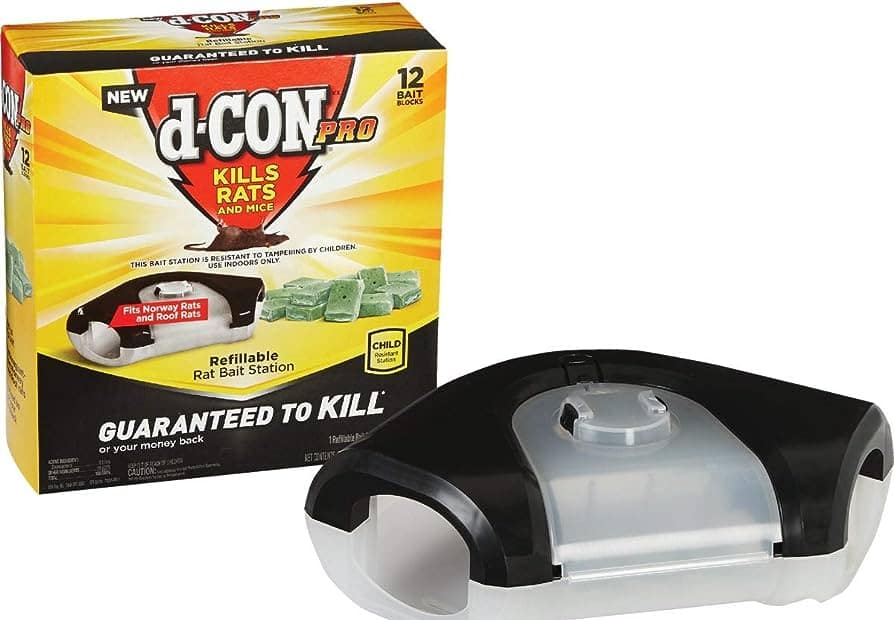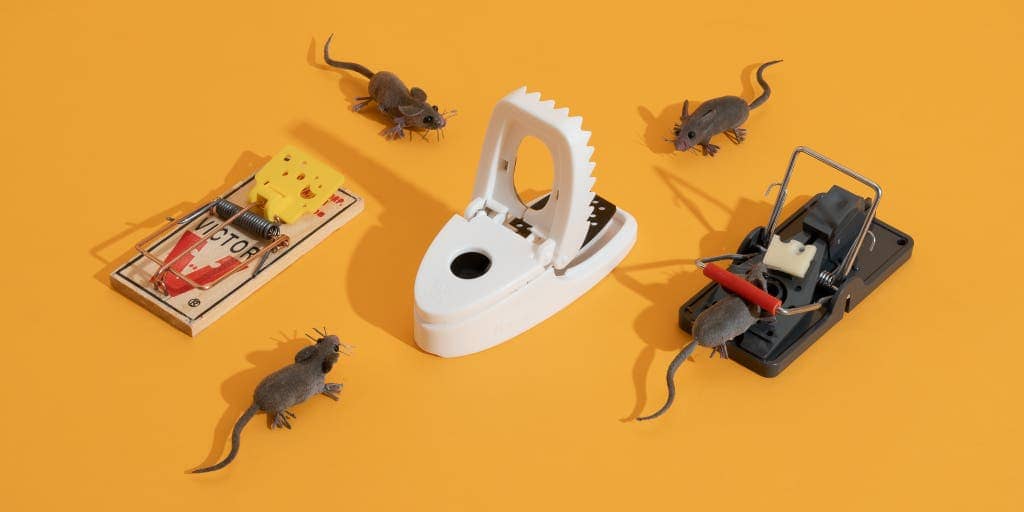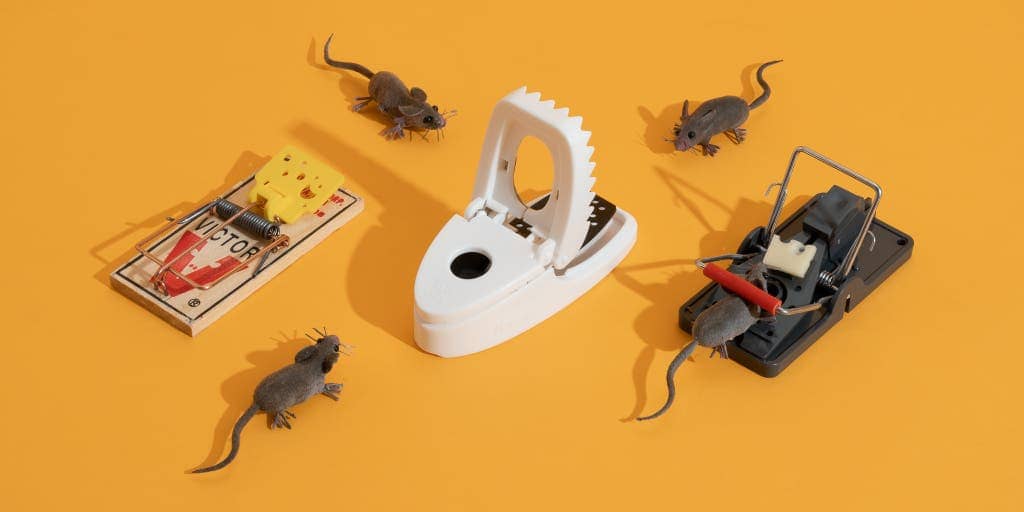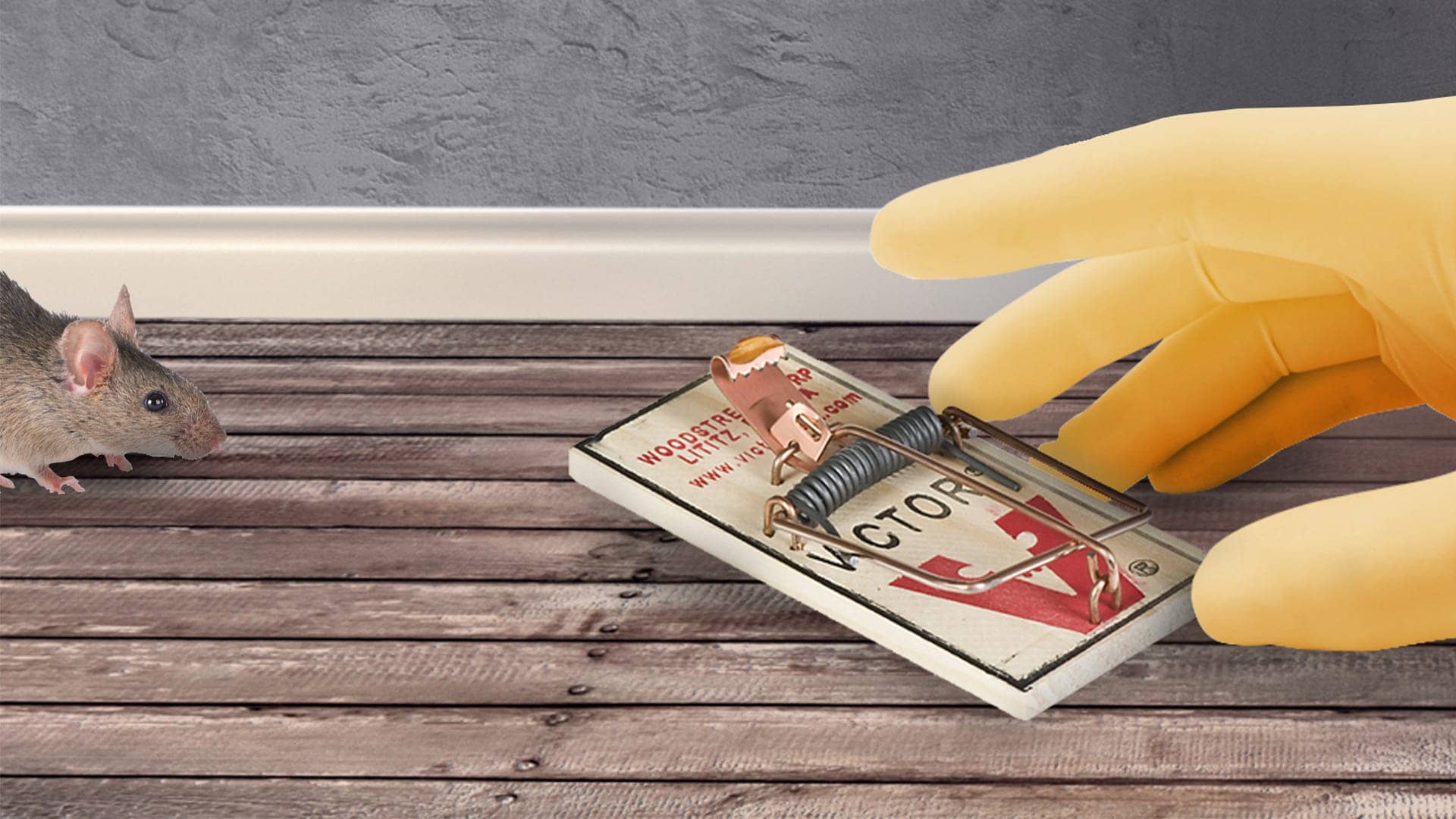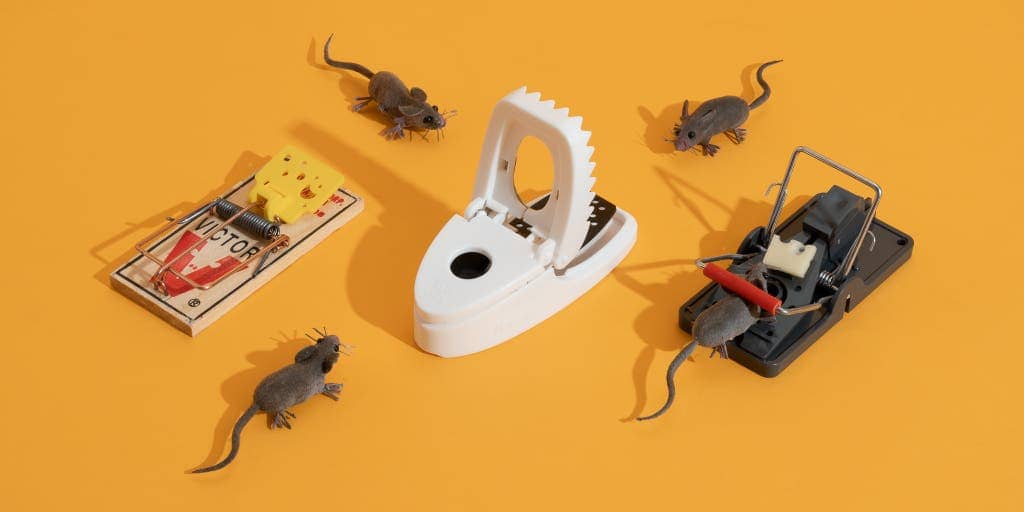Using food waste as bait in mouse traps has both advantages and disadvantages. It is an effective way to lure mice due to their strong sense of smell and attraction to food.
However, using food waste can also attract other pests, create a mess, and release foul odors. It is important to carefully weigh the pros and cons before deciding to use food waste as bait in mouse traps. We will explore the benefits and drawbacks of using food waste as bait in mouse traps, helping you make an informed decision on the most suitable bait to use for effective mouse control.

Credit: www.homedepot.com
The Benefits Of Using Food Waste In Mouse Traps
Discover the advantages of using food waste as bait in mouse traps. By utilizing food waste, you can effectively attract and trap mice while reducing waste and promoting eco-friendly practices.
When it comes to choosing the best bait for mouse traps, food waste may not be the first option that comes to mind. However, using food waste as bait can bring several benefits that make it a viable choice for trapping pesky rodents.
Let’s explore the attractiveness, cost-effectiveness, and eco-friendliness of using food waste as bait.
Attractiveness Of Food Waste As Bait
- Strong smell: Food waste tends to have a strong and enticing smell that can attract mice effectively.
- Familiarity: Since mice are scavengers by nature, they are more likely to be attracted to food waste as it mimics their natural feeding habits.
- Versatility: Food waste offers a wide range of options for baiting traps, allowing you to experiment with different types to find what works best.
Cost-Effectiveness Of Food Waste
- Affordability: Food waste is readily available and often comes at little to no cost, making it a cost-effective option for baiting mouse traps.
- Utilization of leftovers: Using food waste helps you reduce waste and make use of leftovers that might otherwise go to waste.
- Convenience: You can easily collect food waste from your kitchen or even gather it from local restaurants or grocery stores.
Eco-Friendliness Of Food Waste
- Sustainability: By using food waste as bait, you are utilizing a resource that would otherwise end up in landfills, contributing to environmental degradation.
- Reduced chemical exposure: Unlike some commercial mouse baits, food waste does not contain harmful chemicals that could pose a potential risk to household pets or humans.
- Organic option: Opting for food waste as bait aligns with eco-friendly practices and promotes the use of organic materials rather than synthetic alternatives.
Using food waste as bait in mouse traps offers a range of benefits, including its attractiveness to mice, cost-effectiveness, and positive environmental impact. Give it a try and see how effective this natural bait can be in safely catching and removing unwanted mice from your home.
The Limitations Of Using Food Waste In Mouse Traps
Using food waste as bait in mouse traps has both advantages and disadvantages. On the positive side, it makes use of leftover food and reduces waste. However, it may also attract other pests and increase the risk of contamination, posing limitations to this approach.
Using Food Waste In Mouse Traps: The Limitations
Attracting Other Pests:
- Food waste used as bait in mouse traps can also attract other pests, such as ants, cockroaches, and flies.
- Other pests may be drawn to the strong odor and accessibility of food waste, making the mouse trap less effective in targeting mice alone.
- When using food waste as bait, there is a risk of inadvertently inviting a wider range of pests, potentially leading to an infestation.
Potential Hygiene Issues:
- Food waste can quickly spoil and create hygiene issues when left in mouse traps for extended periods.
- Rotten food can attract bacteria, mold, and unpleasant odors, posing health risks if not carefully managed.
- It becomes crucial to regularly check and replace food waste bait to maintain a clean and hygienic trapping environment.
Difficulty in Removing and Replacing Bait:
- Food waste can be messy to handle and may leave behind residue, making it difficult to remove and replace in mouse traps.
- Handling rotting or spoiled food can also be unpleasant, requiring extra precautions to avoid any contact with potential contaminants.
- The tedious process of cleaning and replenishing bait can be time-consuming, especially in situations where frequent trap maintenance is necessary.
Using food waste as bait in mouse traps offers certain limitations that should be considered. The potential attraction of other pests, hygiene issues, and the difficulty in removing and replacing bait are important factors to weigh when deciding on the most suitable bait for effectively targeting mice while ensuring a clean and hygienic trapping environment.
Alternative Bait Options For Mouse Traps
Discover alternative options for baiting mouse traps using food waste. Explore the pros and cons of this method in effectively catching mice while reducing food waste.
Using food waste as bait in mouse traps can be a cost-effective and environmentally friendly way to deal with mouse infestations. However, there are alternative bait options that you can consider using to attract mice to your traps. Let’s explore some of these options:
Cheese As Bait:
- Cheddar cheese: This type of cheese has a strong odor that can attract mice to the trap.
- Swiss cheese: Mice are known to have a preference for the strong scent of Swiss cheese.
- Blue cheese: The pungent smell of blue cheese can be highly appealing to mice.
Using cheese as bait has been a traditional method for catching mice. Its strong smell can lure them into the trap, making it an effective choice.
Peanut Butter As Bait:
- Creamy peanut butter: Its sticky and savory texture can entice mice to approach the trap.
- Chunky peanut butter: The small pieces of nuts in chunky peanut butter can add an extra layer of attraction for mice.
Peanut butter is a popular choice for mouse traps due to its strong scent and sticky consistency. Mice find the smell and taste of peanut butter irresistible, making it a reliable bait option.
Commercial Mouse Baits:
- Pellets: These small, pellet-shaped baits contain a mix of attractants and toxins that mice find appealing.
- Gel bait: This sticky gel bait can be applied to specific areas or small pieces of cardboard to attract mice.
Commercial mouse baits are designed to be highly effective in attracting and eliminating mice. They often contain potent attractants that entice mice to consume the bait and the poison within, offering a convenient and efficient solution for dealing with mouse infestations.
By considering these alternative bait options for mouse traps, you can increase the chances of capturing mice effectively. Remember, the type of bait you choose may depend on the individual preferences of the mice in your area. Experimenting with different bait types can help you find the most successful and suitable option for your specific situation.
Tips For Using Food Waste As Bait In Mouse Traps
Discover the pros and cons of using food waste as bait in mouse traps. Learn effective tips for using food waste as bait, maximizing your chances of catching those pesky mice.
Using Food Waste as Bait in Mouse Traps: Tips for Success
If you’re dealing with a pesky mouse problem, utilizing food waste as bait in mouse traps can be an effective and eco-friendly solution. Not only does it allow you to repurpose kitchen scraps, but it can also lure mice more effectively than store-bought baits.
However, to maximize the success of this method, proper trap placement, regular bait rotation, and consistent monitoring are essential. Here are some tips to help you make the most of using food waste as bait in mouse traps:
Proper Placement Of The Trap:
- Position traps along walls, as mice tend to run along them.
- Place traps near areas with mouse activity, such as droppings or chewed on items.
- Ensure traps are out of reach of children and pets.
- Consider using bait stations to prevent accidental access.
Rotation Of Bait To Maintain Effectiveness:
- Change the bait every 1-2 days to prevent the scent from becoming stale.
- Experiment with different types of food waste, as mice may have preferences.
- Avoid using excessive amounts of bait, as it may allow mice to eat without setting off the trap.
- Remove and dispose of uneaten bait promptly to maintain cleanliness and effectiveness.
Monitoring And Reassessing The Bait Strategy:
- Regularly check traps to see if they have been triggered.
- If traps are consistently empty, consider changing the bait or trap location.
- Adjust bait strategy based on the effectiveness observed.
- Maintain a clean environment to discourage mice and promote trap efficacy.
Remember, using food waste as bait in mouse traps can be a cost-effective and sustainable approach to dealing with mice. By following these tips for proper trap placement, regular bait rotation, and consistent monitoring, you can increase the chances of successfully trapping mice while minimizing the use of harmful chemicals.
Stay vigilant and adapt your strategy as needed to effectively control the mouse population in your home.
Frequently Asked Questions On Using Food Waste As Bait In Mouse Traps: Pros And Cons
What Are The Disadvantages Of Mouse Traps?
Mouse traps have a few drawbacks: may cause harm to pets and children, require frequent checking, and can be messy to clean up.
Does Baiting Mouse Traps Attract More Mice?
Baiting mouse traps does attract more mice. Bait entices them to the trap effectively.
What Is The Best Bait To Put On A Mousetrap?
The best bait for a mousetrap is peanut butter, as it is irresistible to mice.
What Can Eat Peanut Butter Off A Mouse Trap Without Setting It Off?
A small animal like a cockroach can eat peanut butter off a mouse trap without setting it off.
Conclusion
Using food waste as bait in mouse traps has both pros and cons. On the positive side, it offers a cost-effective solution for disposing of excess food and reduces waste going into landfills. It also has the potential to attract mice more effectively, increasing the chance of successful trapping.
Additionally, using food waste aligns with eco-friendly practices, as it promotes recycling and reduces the need for harmful chemicals. On the other hand, there are some drawbacks to consider. Food waste can attract other pests, such as ants or flies, creating additional problems.
The decomposition of food waste can also produce unpleasant odors. Furthermore, certain types of food waste may not be effective in attracting mice, leading to unsuccessful trapping attempts. Ultimately, the decision to use food waste as bait will depend on individual circumstances and preferences.
It is worth considering the pros and cons before deciding on the most suitable bait for mouse traps.
